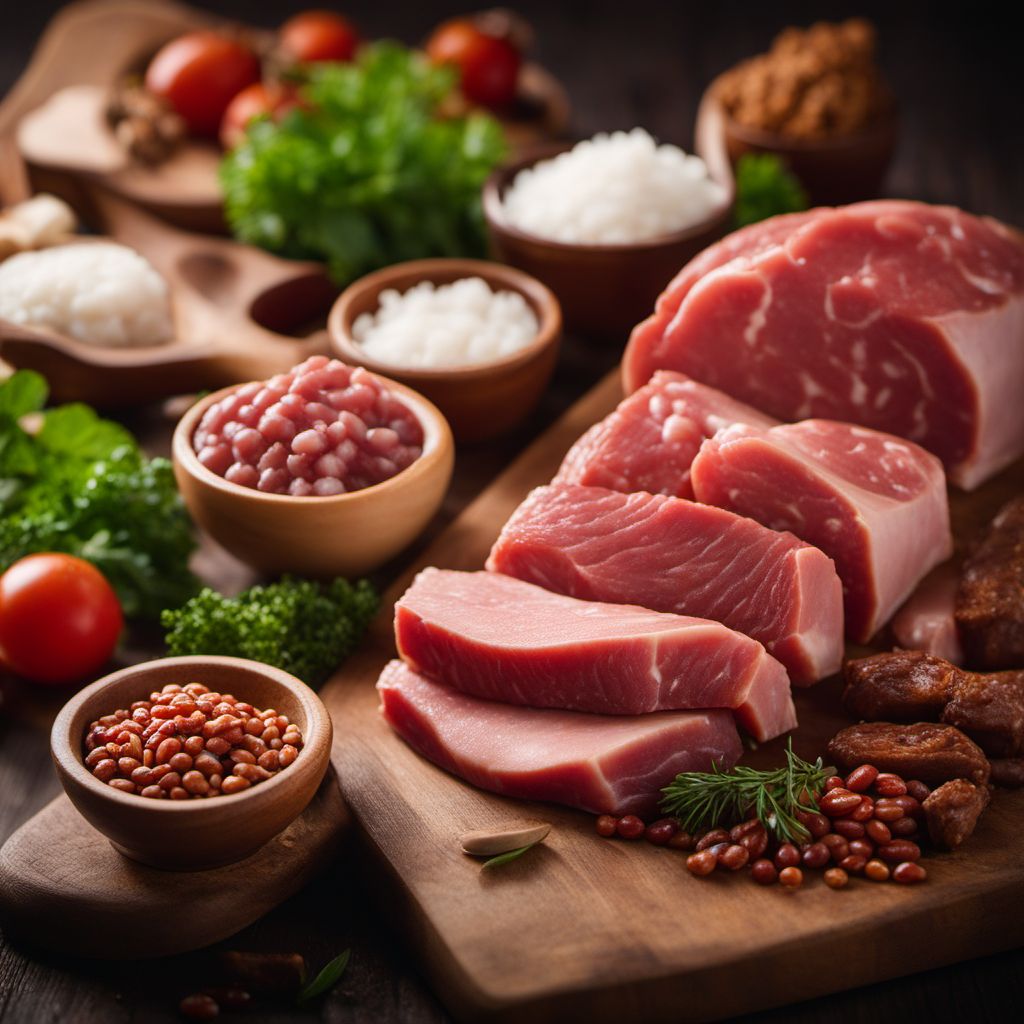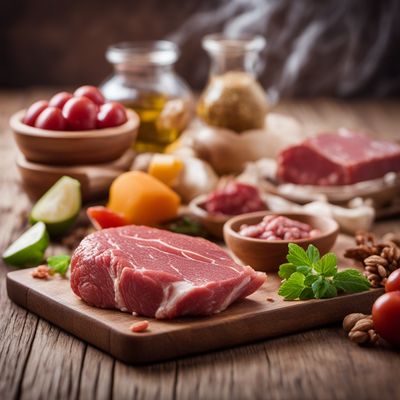
Ingredient
Mammals and birds meat and products thereof
The Versatile World of Animal Protein
Mammals and birds meat and products thereof encompass a vast array of ingredients, including beef, pork, lamb, chicken, turkey, and more. These proteins are known for their rich flavors, varying textures, and distinct appearances. Beef, for example, can range from tender cuts like filet mignon to flavorful cuts like ribeye. Pork offers versatility with its tenderloin, ribs, and bacon, while lamb provides a unique earthy taste. Poultry, such as chicken and turkey, offers lean meat with a mild flavor and tender texture. These ingredients can be prepared using various cooking techniques, including grilling, roasting, braising, or frying, allowing for endless culinary possibilities.
Origins and history
The consumption of mammals and birds meat dates back to ancient times when humans began hunting and domesticating animals for food. The exact origins of meat consumption are difficult to trace, but it is believed that early humans relied on hunting for survival. Over time, the domestication of animals led to the development of livestock farming, allowing for a more consistent and reliable supply of meat. Different cultures have their own traditions and preferences when it comes to meat consumption, with certain meats being more prevalent in specific regions.
Nutritional information
Mammals and birds meat and products thereof are excellent sources of high-quality protein, essential amino acids, vitamins, and minerals. They provide important nutrients such as iron, zinc, vitamin B12, and niacin. The nutritional content can vary depending on the specific cut or product, but they generally offer a good balance of macronutrients and contribute to a healthy and balanced diet.
Allergens
Some individuals may have allergies or sensitivities to specific types of meat, such as beef, pork, or poultry. It is important to be aware of these potential allergens and take necessary precautions when consuming or preparing dishes containing these ingredients.
How to select
When selecting mammals and birds meat and products thereof, it is essential to choose fresh, high-quality cuts. Look for meat that is firm to the touch, with a vibrant color and minimal odor. Avoid meat that appears discolored, has a strong smell, or feels slimy. Additionally, consider the source of the meat, opting for organic or pasture-raised options when possible to support sustainable and ethical farming practices.
Storage recommendations
To maintain the freshness and quality of mammals and birds meat and products thereof, it is crucial to store them properly. Raw meat should be stored in the refrigerator at temperatures below 40°F (4°C) to prevent bacterial growth. It is recommended to use or freeze raw meat within a few days of purchase. Cooked meat should be stored in airtight containers in the refrigerator and consumed within 3-4 days. Freezing is an excellent option for long-term storage, but it is important to wrap the meat tightly to prevent freezer burn.
How to produce
Producing mammals and birds meat and products thereof requires specialized knowledge and resources. However, individuals can explore small-scale farming or homesteading to raise poultry, such as chickens or turkeys, for personal consumption. It is important to research local regulations, obtain proper permits, and ensure the welfare of the animals throughout the process.
Preparation tips
When preparing mammals and birds meat and products thereof, it is essential to handle them safely to prevent cross-contamination. Always wash hands, utensils, and surfaces thoroughly after handling raw meat. Different cuts and types of meat require specific cooking techniques and times. For example, steaks are often best cooked quickly over high heat, while tougher cuts benefit from slow cooking methods like braising or stewing. Marinating can enhance the flavor and tenderness of meat, and using a meat thermometer ensures that it is cooked to the desired level of doneness.
Culinary uses
Mammals and birds meat and products thereof are incredibly versatile and can be used in a wide range of culinary applications. Beef is commonly used in dishes like steaks, burgers, stews, and roasts. Pork is utilized in various forms, including chops, sausages, bacon, and ham. Lamb is often featured in Mediterranean and Middle Eastern cuisines, used in dishes like kebabs, curries, and roasts. Chicken and turkey are staples in many cuisines and can be used in soups, stir-fries, salads, and sandwiches. The possibilities are endless, and these ingredients form the foundation of countless traditional and contemporary recipes.
Availability
Mammals and birds meat and products thereof are commonly available in most regions and countries worldwide. The specific types and cuts may vary depending on local preferences and cultural traditions.
More ingredients from this category

Animal offal and other slaughtering products
The Delicacies of the Abattoir

Processed or preserved meat
Preserved Delights

Animal mechanically separated meat (MSM)
The Versatile Ingredient: Animal Mechanically Separated Meat (MSM)

Mammals and birds meat
The Savory Delights of Animal Protein

Animal carcase
The Essence of Animal Carcase

Animal fresh fat tissues
Luscious Animal Fats